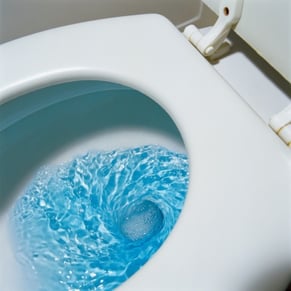Chico Plumbing Help: Will Replacing Your Toilet Save You Water?
[fa icon="calendar"] August 12, 2015 / by Home Services Expert
 If you like to cook, you probably give your kitchen sink and dishwasher a real workout. If you have teenagers, your shower probably runs longer and more frequently than you can keep count. When it comes to water consumption in your home, no water fixtures work harder than your toilets. That’s why at some point in time you will need some plumbing help.
If you like to cook, you probably give your kitchen sink and dishwasher a real workout. If you have teenagers, your shower probably runs longer and more frequently than you can keep count. When it comes to water consumption in your home, no water fixtures work harder than your toilets. That’s why at some point in time you will need some plumbing help.
If you have a family of four, you probably use about 400 gallons of water per day, and about 30 percent of it goes to flushing your home's toilets, according to the U.S. Environmental Protection Agency. By way of comparison, about 20 percent goes to washing clothes, nearly 17 percent to taking showers and nearly 16 percent to using faucets.
Toilet water leaks add up too, potentially constituting about 14 percent of the water you consume. Meanwhile, a running toilet can squander about 200 gallons of water per day.
No one – not even the experts offering plumbing help in Chico – would ever claim that shopping for a new toilet is the most exhilarating shopping experience you'll ever undertake. But then again, you never know.
If the prospect of conserving water and saving money appeals to your thrifty instincts, it's worth taking a look at replacing an old or malfunctioning toilet – and watching the savings flow.
WaterSense makes economical sense
Just as the EPA's Energy Star program directs homeowners to energy efficient air conditioners, furnaces and electronics, its WaterSense program guides homeowners to efficient water fixtures. This guidance is particularly helpful in light of the Energy Policy Act of 1992, which requires fixture manufacturers to make their products energy efficient – and according to the EPA's strict standards.
WaterSense toilet specifications call for a maximum flow of 1.28 gallons per minute (GPM) or 4.8 liters per minute (L/min). (Faucets, meanwhile, are limited to 1.5 GPM or 5.7 L/min. Showerheads must be equal to or less than 2.0 GPM or 7.6 L/min.)
But that's the highly technical talk. Older toilets – or those made before 1992 – use between 3.5 and 7 gallons per flush; newer energy efficient toilets use only about 1.3 gallons. This means that purchasing a WaterSense toilet could save about 13,000 gallons of water per year.
If you're even a casual environmentalist, you might be enthused to know about another EPA calculation: if all the inefficient toilets in the United States were replaced with WaterSense products, about 520 billion gallons of water a year would be saved – and that's about the same amount of water that spills over Niagra Falls in about 12 days.
WaterSense affords selection
Lest you conjure up images of an energy efficient toilet being more suited to an outhouse than your house, rest assured: WaterSense toilets are offered in a wide variety of shapes, sizes and colors.
You can choose between efficient and highly efficient models, including those equipped with dual flush technology. These toilets offer plumbing help for your home because they can accommodate two “flush volumes”: a full flush for solids and a lesser flush for liquids only.
This type of technology usually comes at a price; however you might be surprised at the variety of price points on WaterSense toilets – and further surprised by the fact that some utilities offer rebates and vouchers. In this way the program is similar to the EPA's Energy Star initiative.
You can shop for WaterSense toilets online or look for the blue and green WaterSense logo on toilets at your favorite home improvement store.
Next time you need plumbing help, contact a Chico Plumber at Experts In Your Home. Whether you're remodeling a bathroom, building a home or are determined to conserve water and save money with each and every flush.



